4 Strategies for Even Light Distribution in Vertical Grows
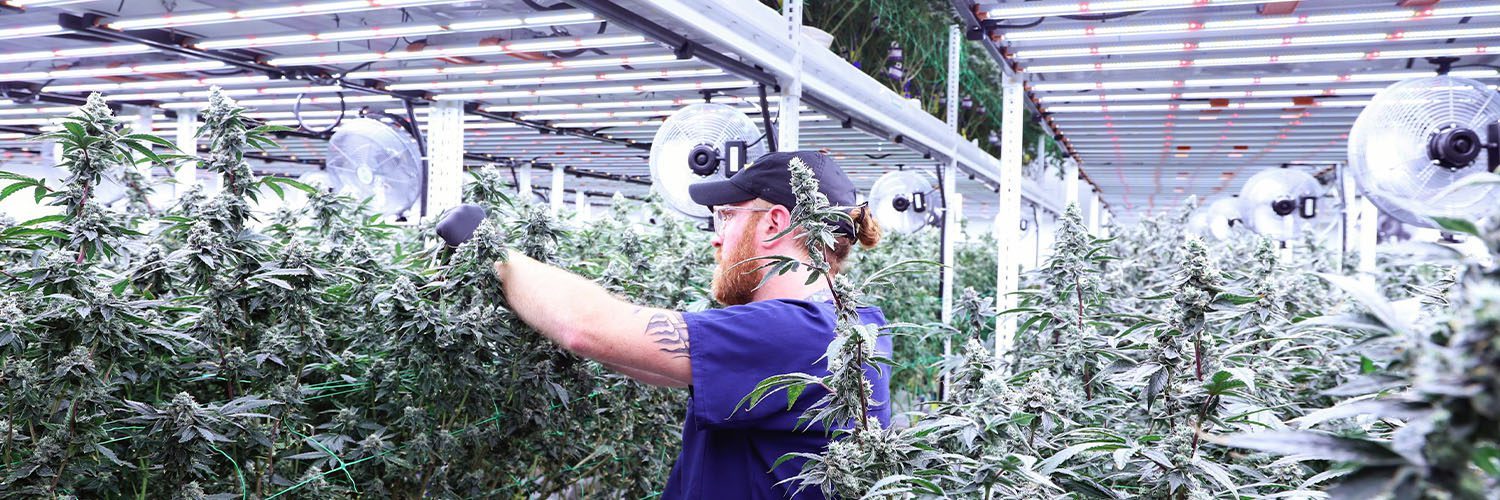
The Right Lights for Your Grow
Any cultivation business’s expansion into vertical farming is a complex challenge. One of the main goals is to achieve optimal light distribution on each level of the grow.
We are here to address the interplay between light physics, plant physiology, and technological innovations. Those elements work together to deliver light to the tiers in your grow room, and it’s on your team to ensure that the light falls evenly and helps all plants grow as healthy as possible.
Before we get going, is your business considering an expansion to a vertical environment within your facility? We’ve got helpful tips for building out a multi-tier grow.
Light Physics in Plant Growth
 The Inverse Square Law
The Inverse Square Law
At the heart of understanding light distribution lies the inverse square law, which says that light intensity decreases proportionally to the square of the distance from the light source. This means that light gets weaker the farther it travels from the source, and this weakening happens faster than you might expect.
This principle is important to understand in vertical grow environments.
In vertical rooms, the variance in distance between light sources and plant canopies across tiers can lead to significant disparities in the actual amount of light received by plants. The measurement here is photosynthetic photon flux density (PPFD), which conveys how much light that’s actually used for photosynthesis is hitting a given square meter of space every second. You want an even PPFD across your room.
Growers can and should use mathematical modeling to predict intensity falloff and adjust light placement and intensity accordingly, ensuring more uniform PPFD across all tiers.
Light Intensity and Canopy Dynamics
Diving deeper, the Beer-Lambert Law provides a framework for understanding how light is absorbed and scattered within the plant canopy. This absorption, influenced by the actual number of leaves on a plant, significantly affects the light available to lower canopy levels. By trimming and shaping the plants, you can make sure light reaches all levels, especially in tight, vertical growing spaces. Watch your plant’s leaf area especially up top, closer to the light source.Lighting Technologies for Precision Cultivation
 Tailoring Spectra with LEDs
Tailoring Spectra with LEDs
The rise and advancement of LED technology has allowed growers to focus on precision in the garden. LEDs let growers manipulate light spectra to influence plant growth and development.
By adjusting the spectral output, growers can elicit specific plant responses, optimizing growth rates, morphology, and secondary metabolite production (think THC, for instance, or a terpene like myrcene). Implementing LEDs with adjustable spectrum capabilities allows for dynamic light management tailored to different growth stages or specific plant strains.
Pulsed Lighting: How to Enhance Photosynthesis Without Adding Thermal Stress
Pulsed lighting has the potential to increase photosynthetic efficiency by delivering high-intensity light in short bursts, reducing thermal stress on plants.
This technique, based on the understanding of photosynthetic saturation points and non-photochemical quenching, can be particularly beneficial in vertical setups where managing heat accumulation is a challenge. Consider running a trial on pulsed lighting with an R&D crop.
Architectural Design and Cultivation Techniques
 Optimizing Vertical Rack Design
Optimizing Vertical Rack Design
The structural design of vertical racks should facilitate spatial efficiency and optimal light exposure. Both goals should be top-of-mind when implementing a new racking system.
Incorporating inter-reflective materials and strategic geometry can amplify light reach and uniformity. Choosing materials that scatter light instead of reflecting it directly can prevent bright spots and make sure light is spread out more evenly. Consider matte white paint, white plastic, or fabrics, and foils designed for grow rooms; these materials help bounce light around the grow space more evenly than shiny, mirror-like surfaces.
Advanced Canopy Management for Uniform Light Absorption
Techniques such as apical pruning, lateral spreading, and the implementation of rotational systems ensure that all plants, regardless of their position, receive adequate light. Leveraging plant phototropism by periodically adjusting light source positions can promote more uniform growth across the canopy. By doing so, your team makes use of plants’ natural tendency to grow toward light sources, helping them grow evenly. Tune into Cultivation Elevated Episode 17, while host Michael Williamson sits down with Corinne Wilder, VP of Global Commercial Operations at Fluence, to discuss how LED technology has shaped vertical farming.Integrating Supplemental Lighting and Precision Monitoring
 Addressing the Lower Canopy Challenge
Addressing the Lower Canopy Challenge
The deployment of side and intracanopy lighting addresses one of the primary challenges in vertical cultivation—ensuring sufficient light reaches the lower tiers. These systems must be carefully calibrated to complement top lighting, avoiding over-saturation and ensuring that light intensity and quality mimic natural conditions as closely as possible.
Harnessing Data for Light Optimization
The implementation of advanced light sensors and environmental control systems enables real-time monitoring and adjustment of light conditions. Data analytics can be used to fine-tune lighting schedules, intensities, and spectra, based on the dynamic needs of the crop and the specific characteristics of the vertical environment.
Navigating the Future of Light Optimization in Vertical Cultivation
As the science of cannabis cultivation evolves, so do the strategies for optimizing light distribution in vertical farming systems.
The integration of advanced lighting technologies, strategic architectural design, and precise cultivation practices offers a pathway to maximizing yield, efficiency, and product quality in these complex environments.
Growers equipped with a deep understanding of the scientific principles governing light and plant interactions and a willingness to embrace technological innovations are well-positioned to lead the charge in this new era of cannabis cultivation.

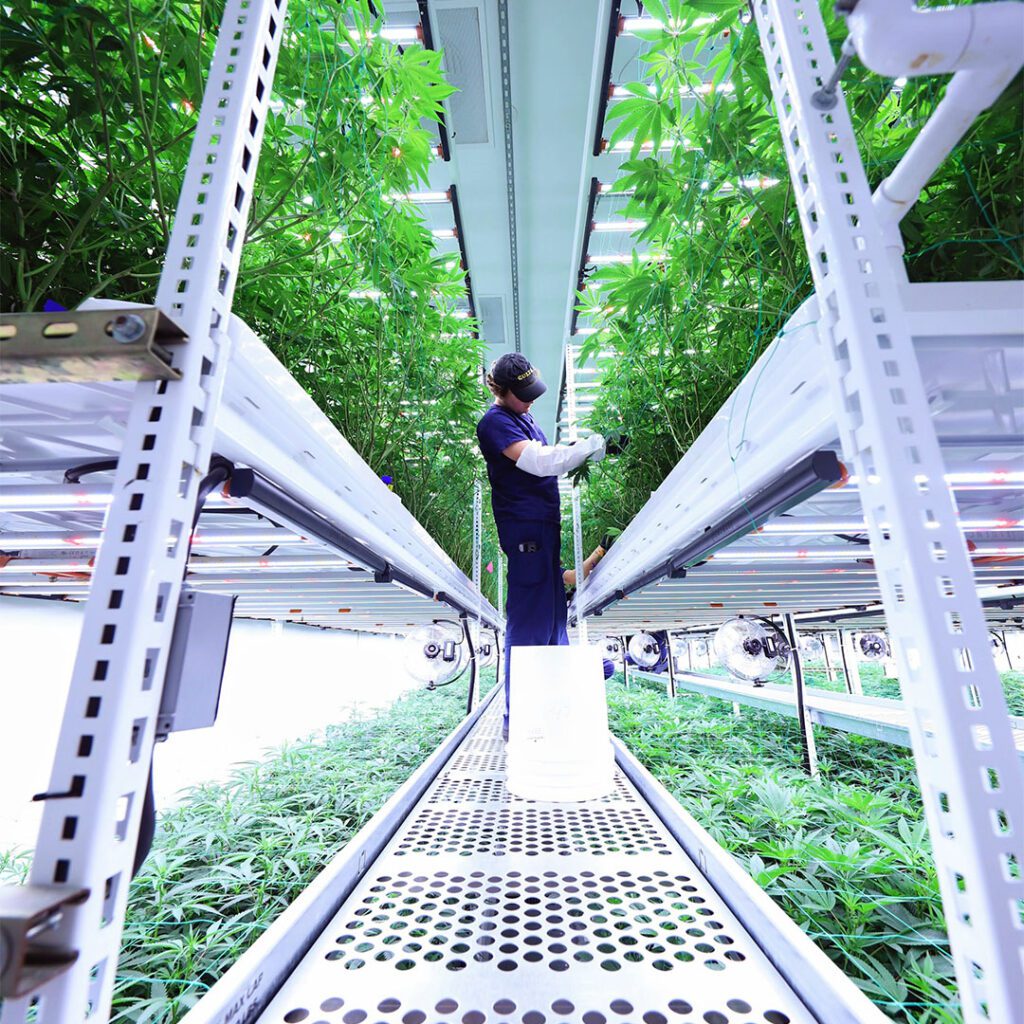 The Inverse Square Law
The Inverse Square Law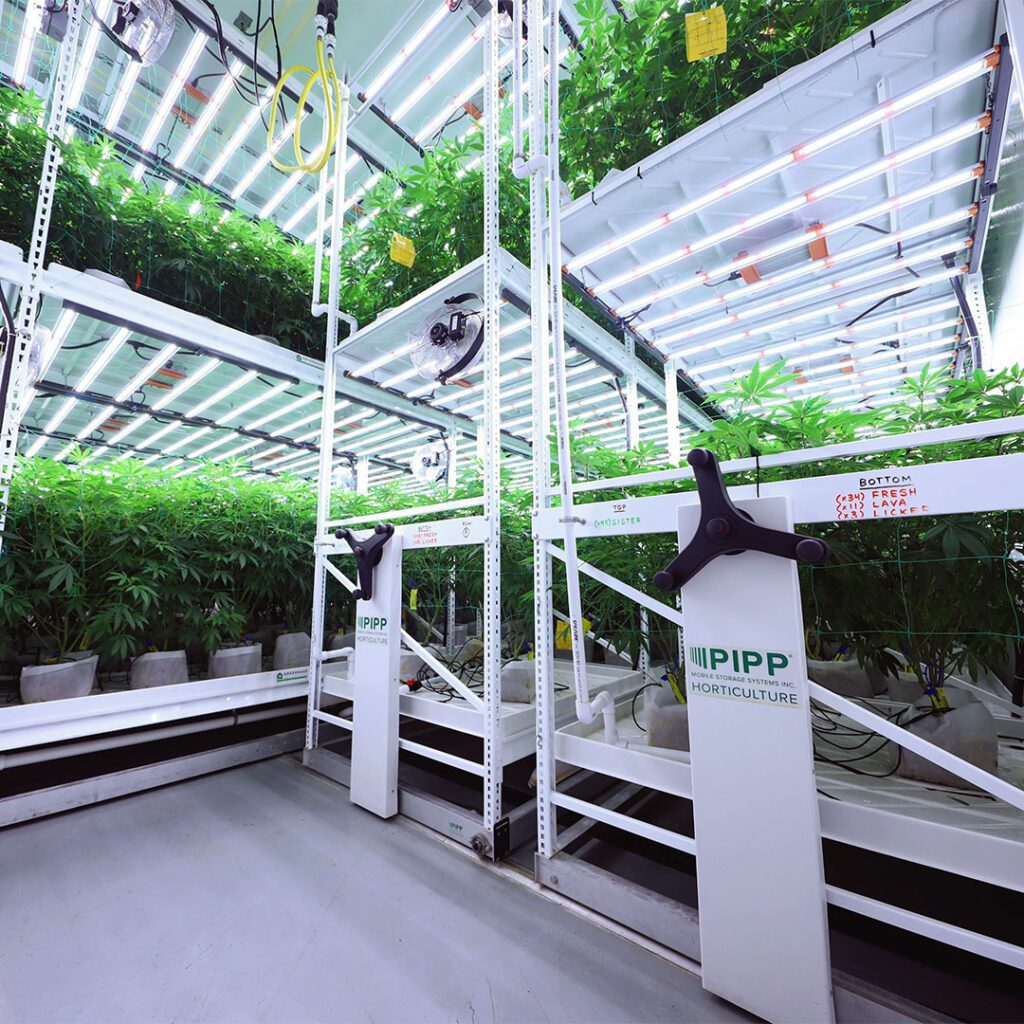 Tailoring Spectra with LEDs
Tailoring Spectra with LEDs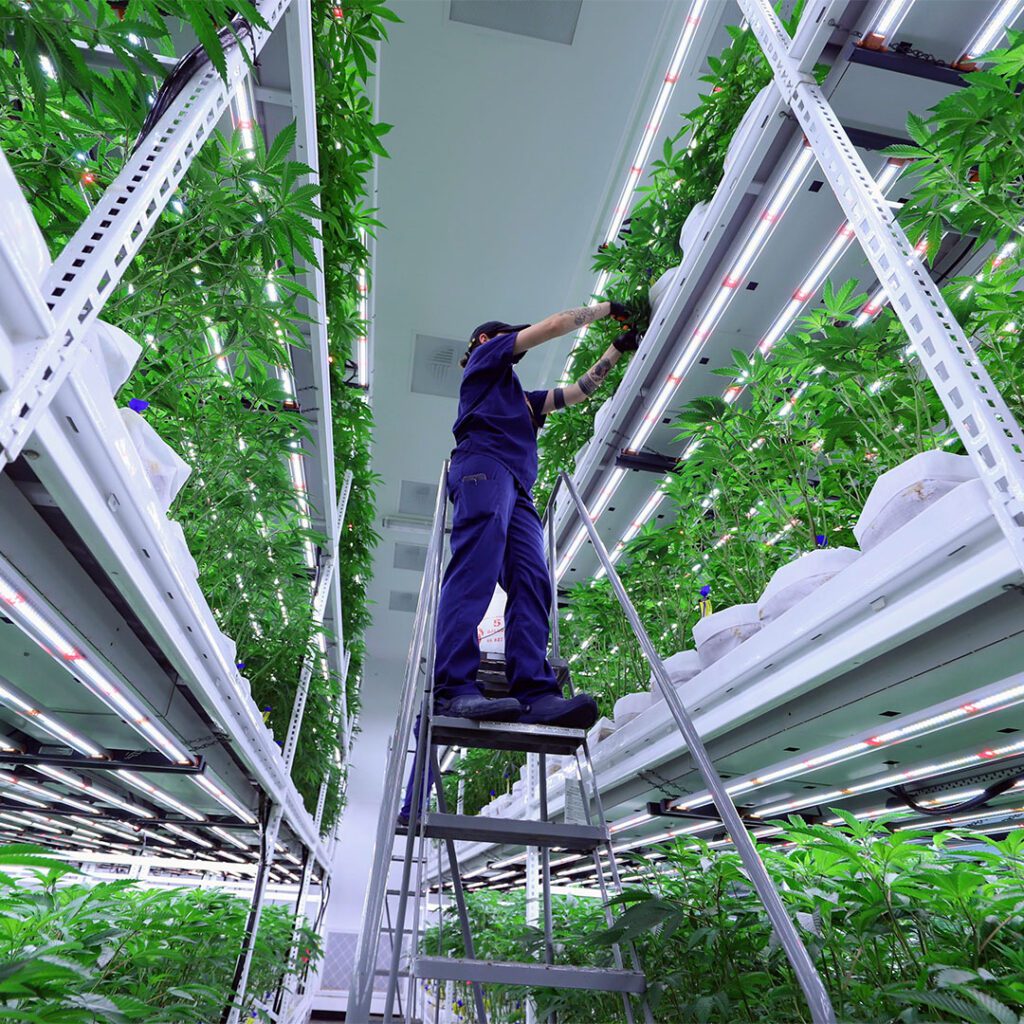 Optimizing Vertical Rack Design
Optimizing Vertical Rack Design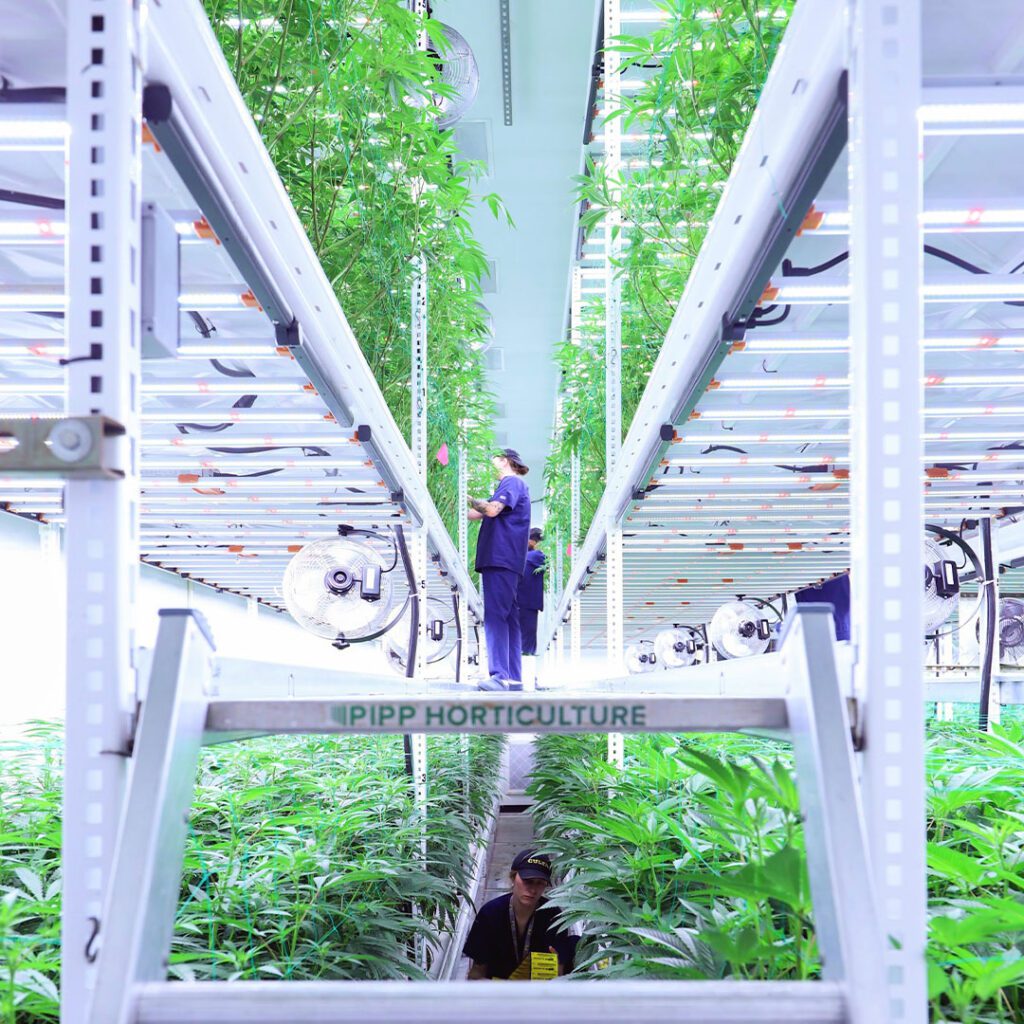 Addressing the Lower Canopy Challenge
Addressing the Lower Canopy Challenge
